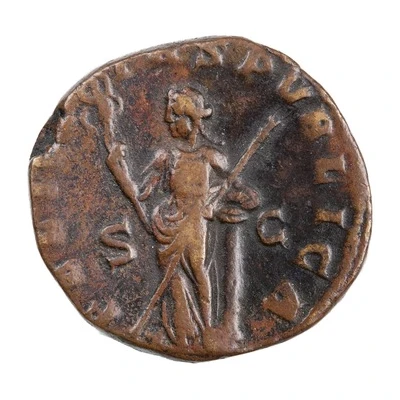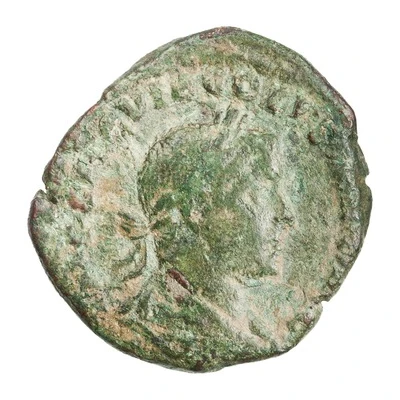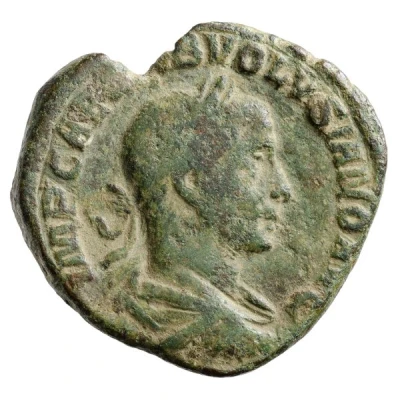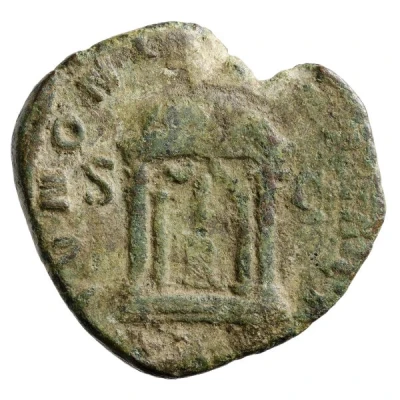


© American Numismatic Society (ANS)
Sestertius - Volusianus FELICITAS PVBLICA S C; Felicitas
| Bronze | 16.1 g | 28 mm |
| Issuer | Rome › Roman Empire (27 BC - 395 AD) |
|---|---|
| Emperor | Volusianus (Gaius Vibius Volusianus) (251-253) Trebonianus Gallus (Gaius Vibius Afinius Trebonianus Gallus) (251-253) |
| Type | Standard circulation coin |
| Years | 251-253 |
| Value | Sestertius (⅛) |
| Currency | Antoninianus, Reform of Caracalla (AD 215 – 301) |
| Composition | Bronze |
| Weight | 16.1 g |
| Diameter | 28 mm |
| Shape | Round (irregular) |
| Technique | Hammered |
| Orientation | Variable alignment ↺ |
| Demonetized | Yes |
| Updated | 2024-10-05 |
| Numista | N#284141 |
|---|---|
| Rarity index | 95% |
Reverse
Felicitas, draped, standing left, leaning on column, holding caduceus in right hand and transverse sceptre in left hand.
Script: Latin
Lettering: FELICITAS PVBLICA S C
Translation:
Felicitas Publica. Senatus Consultum.
Good fortune of the public. Decree of the senate.
Comment
Mass varies: 11.84–19.11 g;Diameter varies: 26–29 mm;
Example of this type:
American Numismatic Society (ANS)
Source:
Online Coins of the Roman Empire (OCRE)
Interesting fact
One interesting fact about the Sestertius - Volusianus coin is that it features the image of Felicitas, the Roman goddess of good luck, prosperity, and happiness, on its reverse side. This is fitting, given that the coin was issued during the reign of Emperor Volusianus, who was known for his efforts to restore peace and prosperity to the Roman Empire after a period of turmoil. The coin's design serves as a symbol of the empire's aspirations for a prosperous and happy future.



